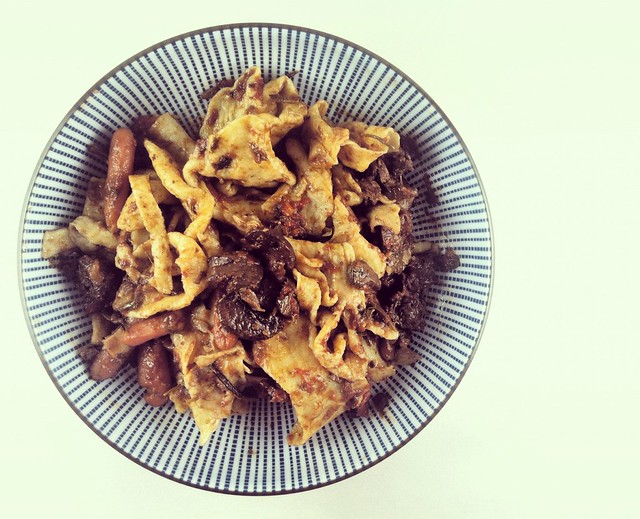For the pickled ginger in this recipe, you can buy the pre-packaged ones from your Asian market–it’s the kind you eat with your sushi–or easily make your own if you have a few extra hours to marinate. I’ve included that recipe below just in case.
When assembling the dish, I tossed all the vegetables with the dressing first before I folded them in with the soba noodles because I didn’t want the noodles to break and get soggy. Serve this cold and you’ll have a nice salad to eat for your Meatless Whatever-Day of the week.
For the pickled ginger:
Ingredients:
1 large knob of ginger, peeled, thinly sliced
1 cup rice vinegar
1/4 cup of white sugar
1 tsp salt1. In a small pot, bring water to a boil. Then add the ginger and cook, stirring once or twice, to soften it, about 30 seconds. Drain the ginger in a strainer, separating the pieces with chopsticks so they drain well. Transfer the ginger to a bowl and let stand.
2. In another separate pot over medium heat, combine the vinegar, sugar, and salt. Stir until the sugar and salt dissolve, then increase the heat to medium high and bring to a boil. Remove from the heat. Pour in the vinegar mixture to completely cover the ginger in the bowl. Let stand for a couple of hours, or overnight.For the soba:
Ingredients:
2 tbsps white miso paste
2 bundles of soba noodles
1 tbsp sesame oil
1 tbsp rice vinegar
pickled ginger
1 medium carrot, cut into matchsticks
1 small head radicchio, thinly sliced
2 scallions, chopped
1 sheet toasted nori, torn
2 tbsps toasted sesame seeds1. Cook soba noodles according to package directions. Rinse under cold water, drain, and place in large colander.
2. Blend miso, sesame oil, rice vinegar, pickled ginger, and about 3 tbsps of water in a blender until smooth.
3. Pour in the miso-pickled ginger dressing in a large mixing bowl. Stir in carrots, radicchio, green onions, nori, and the sesame seeds until well-combined. Fold in the soba noodles and toss gently.




